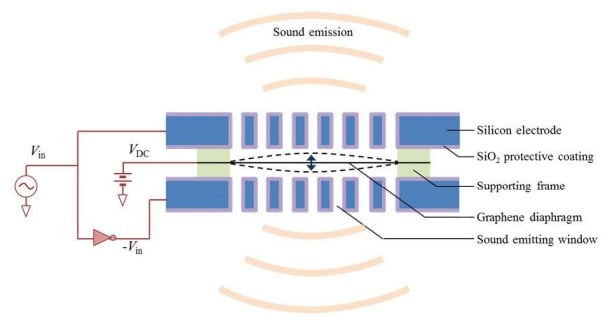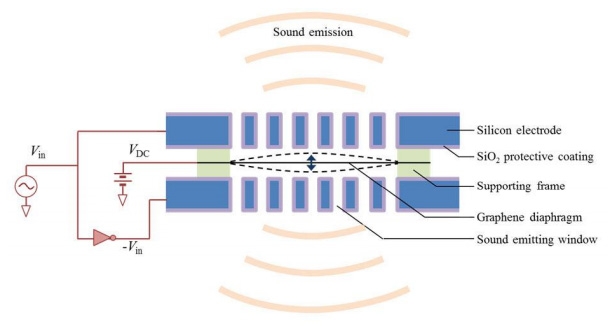
 Graphene Speaker
Graphene Speaker
Researchers at the University of California have demonstrated a prototype headphone sized speaker that uses graphene as the diaphragm and produces exceptionally clear sound
The problem with most loudspeakers is they need the vibrating diaphragm that produces the sound to be as thin and light as possible but this is countered by the need for strength.
Diaphragms made of plastic or even paper are used but they do not have ideal characteristics and need a lot of acoustical engineering to try to overcome their limitations.
Graphene is the form of carbon which is basically like chicken wire: flat hexagons of carbon atoms linked together to form a thin sheet one atom thick. By creating a diaphragm just 30 nanometres thick and 5mm in diameter they have managed to create a speaker that outperforms traditional designs.
Flat frequency response
"For human audibility, an ideal speaker or earphone should generate a constant sound pressure level from 20 Hz to 20 kHz, ie it should have a flat frequency response," say Qin Zhou and Alex Zettl "The graphene speaker, with almost no specialized acoustic design, performs comparably to a high quality commercial headset,"
Of course the other area where a very thin and strong diaphragm would be useful is the other end of the chain, the microphone. If this can be scaled up we could see a whole new generation of microphones, headphones and loudspeakers based on graphene technology.
Tags: Technology



Comments